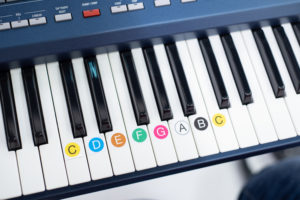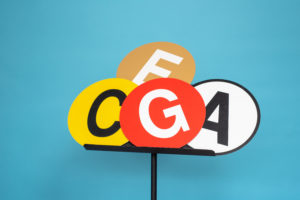The Jostiband uses colour music, a simple musical notation. It has become the colour notation for people who are looking for something simpler than normal notation.
Colour music is useful for people with disabilities. Visually impaired people or people with a brain disorder can also start making music (again) thanks to the clear colour stickers. Colour music is also very suitable for young children. They can then switch to normal musical notation later on.
Ordinary musical notation is an international language for musicians. The lines, notes and symbols show what you have to play and how. You can see this notation in the sheet music of the Jostiband. But… underneath is a translation in bright colour circles. The result is a musical language that you can read quickly.
Order the Colour Music book with manual and free stickers here



